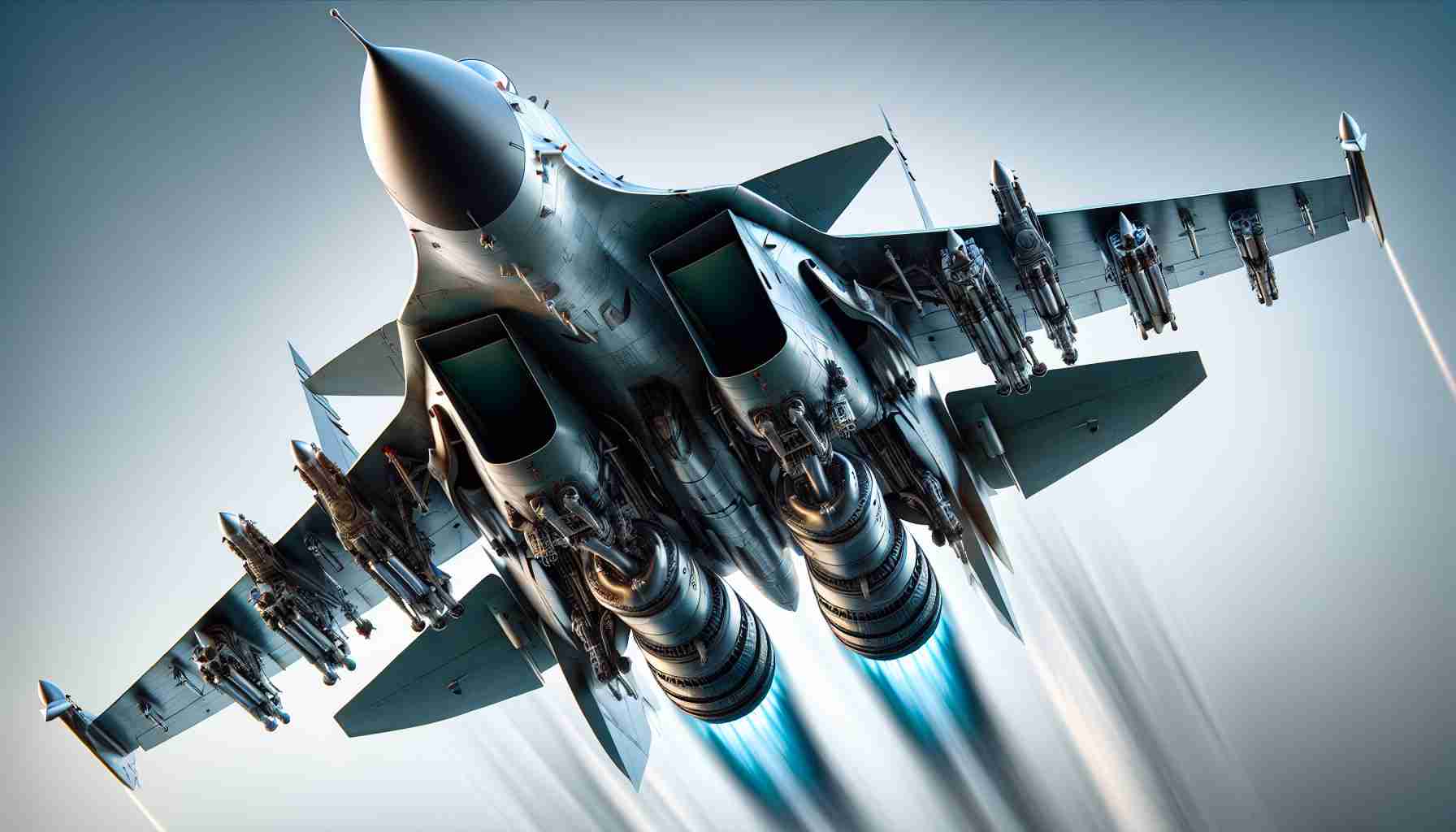Exploring the World of Advanced Military Aviation
The Sukhoi Su-35, crafted by the renowned Russian Sukhoi Corporation, is more than just a fighter jet; it’s a symbol of modern aviation excellence. An advanced upgrade from the Su-27, this multirole aircraft boasts extraordinary capabilities that set it apart on the global stage.
One of its standout features is the ability to engage in supercruise, achieving speeds up to Mach 1.5 without afterburners, a breakthrough that enhances fuel efficiency and range. Powered by two AL-41F1S engines, each capable of yielding 31,900 pounds of thrust, the Su-35 excels in maneuverability, making it a fierce competitor in aerial duels.
The aircraft’s advanced avionics elevate its operational edge. With the cutting-edge Irbis-E radar, it can spot targets up to 400 kilometers away, alongside an infrared search-and-track system that allows for tracking stealth aircraft effectively. This technological prowess combines with a combat radius of 1,600 kilometers, empowering the Su-35 to engage threats well beyond immediate battlegrounds.
Its impressive payload capacity of 8,000 kilograms allows for diverse armament, from air-to-air missiles to smart munitions, showcasing its versatility in varying combat scenarios. The Su-35 has not only dazzled crowds at international airshows but has also piqued the interest of several nations looking to boost their defense capabilities. This jet represents a pinnacle of innovation, highlighting the ongoing evolution of military aviation.
Global Defense Dynamics and the Future of Military Aviation
The rise of advanced military aircraft like the Sukhoi Su-35 underscores profound shifts within global defense dynamics and the military industry. As nations invest heavily in state-of-the-art technology, the implications extend far beyond national security—they resonate across society and culture, potentially reshaping international relations and defense strategies.
Competitively, countries that enhance air superiority with superior technology may influence geopolitical power structures. Increased military capabilities can lead to arms races, as nations seek parity or superiority over adversaries. This arms proliferation fosters not only military tensions but may also escalate diplomatic disputes, as nations vie for technological dominance.
On the economic front, the military aviation sector contributes significantly to the global economy by driving innovation and creating jobs. The demand for advanced aircraft stimulates research and development, resulting in breakthroughs that often spill over into civilian technology, such as aerospace engineering advancements and materials science.
However, this focus on military advancements raises critical environmental concerns. The carbon footprint left by military flights, especially with fossil fuel-dependent engines, poses a challenge amid global climate change efforts. Future trends may see a shift toward sustainable aviation technologies, driven by pressures to reduce emissions alongside military efficacy.
In a larger context, the ongoing evolution of military aviation not only influences the battlefield but also shapes our societal fabric, urging a reevaluation of security, economics, and environmental responsibility in a rapidly changing world.
The Future of Aerial Warfare: Discover the Advanced Capabilities of the Sukhoi Su-35
Introduction to the Sukhoi Su-35
The Sukhoi Su-35, developed by the esteemed Russian aerospace manufacturer Sukhoi Corporation, stands as a testament to cutting-edge military aviation. This multirole fighter aircraft, a modernized variant of the iconic Su-27, is engineered for versatility and exceptional performance, making it a significant player in contemporary aerial combat.
Key Features
Supercruise Capability
A standout trait of the Su-35 is its supercruise capability, allowing the jet to fly at speeds of up to Mach 1.5 without the need for afterburners. This feature dramatically enhances its fuel efficiency and operational range, setting it apart from many aircraft in its class and allowing for extended missions with a reduced logistical footprint.
Powerful Engine Performance
Equipped with two AL-41F1S engines, the Su-35 can generate a thrust of 31,900 pounds each, enabling incredible maneuverability and agility in combat scenarios. This engine configuration not only improves performance but also ensures a superior reaction time against threats.
Advanced Avionics and Radar Systems
The Su-35 integrates cutting-edge avionics, particularly the Irbis-E radar, which boasts the ability to detect targets at distances of up to 400 kilometers. This radar system is complemented by an infrared search-and-track (IRST) system that excels in detecting stealthy opponents, enhancing situational awareness and target acquisition in modern warfare.
Specifications
– Combat Radius: 1,600 kilometers
– Payload Capacity: 8,000 kilograms
– Armament: Capability to carry a mix of air-to-air missiles and precision-guided munitions.
These specifications make the Su-35 a formidable aircraft capable of executing diverse mission profiles, from air superiority to ground attack.
Use Cases in Modern Warfare
The versatility of the Su-35 makes it suitable for various applications, including:
– Air Superiority Missions: Engaging and defeating enemy aircraft.
– Ground Attack Operations: Targeting enemy positions using precision-guided munitions.
– Intelligence, Surveillance, and Reconnaissance (ISR): Gathering critical battlefield data due to its advanced sensors.
Pros and Cons
Pros:
– Exceptional maneuverability and speed.
– Long-range capabilities with supercruise.
– Advanced radar and avionics systems for superior situational awareness.
Cons:
– The geopolitical implications surrounding its adoption can be controversial, particularly concerning international arms control.
– Its complex systems require extensive training and maintenance, which could be a limitation for some air forces.
Market Analysis
The Su-35’s introduction has generated significant interest from various nations seeking to enhance their defense capabilities. Its combination of performance and technology positions it as a competitive choice against other advanced fighters like the F-15EX and Eurofighter Typhoon. As contrived alliances and defense spending strategies evolve globally, the market dynamics for advanced fighters like the Su-35 are poised to shift, with possible implications for global security.
Innovations and Future Trends
As military aviation continues to advance, the Su-35 symbolizes not just current capabilities, but also the potential for future innovations in aerial combat technology. The integration of artificial intelligence (AI) and enhanced electronic warfare systems in upcoming variants may further elevate its effectiveness in unpredictable combat scenarios.
Conclusion
The Sukhoi Su-35 epitomizes modern military aviation’s shift toward more versatile, efficient, and technologically advanced platforms. As global defense needs continue to evolve, its role in shaping the future of aerial warfare remains significant, driving innovations and advancements in combat aviation.
For more insights and updates on military aviation developments, visit this link.







